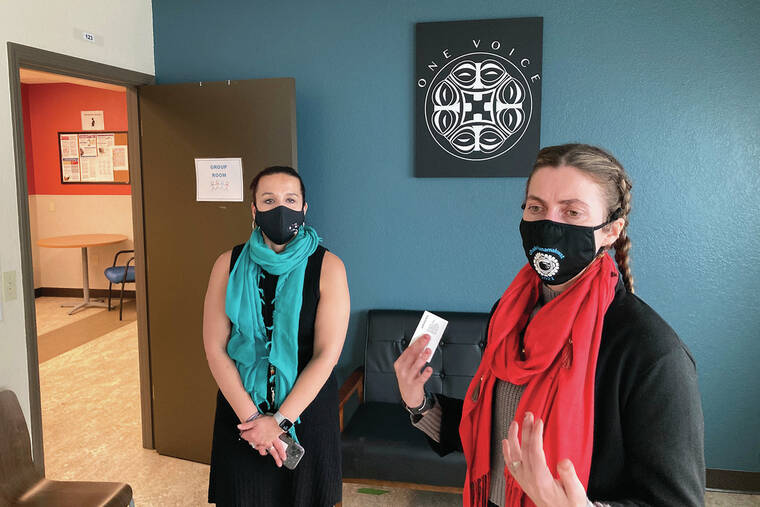Mixed results for Oregon’s pioneering drug decriminalization
SALEM, Ore. — Oregon voters approved a ballot measure in 2020 to decriminalize hard drugs after being told it was a way to establish and fund addiction recovery centers that would offer people aid instead of incarceration.
Yet in the first year after the new approach took effect in February 2021, only 1% of people who received citations for possessing controlled substances asked for help via a new hotline.
ADVERTISING
With Oregon being the first state in America to decriminalize possession of personal-use amounts of heroin, methamphetamine, LSD, oxycodone and other drugs, its program is being watched as a potential model for other states.
Some are questioning whether the approach is proving too lenient, but others say the new system has already had a positive impact by redirecting millions of dollars into facilities to help those with drug dependency issues. The funds come from taxes generated by Oregon’s legal marijuana industry and savings from reductions in arrests, jail time and probation supervision.
Under Ballot Measure 110, possession of controlled substances is now a newly created Class E “violation,” instead of a felony or misdemeanor. It carries a maximum $100 fine, which can be waived if the person calls a hotline for a health assessment. The call can lead to addiction counseling and other services. But out of roughly 2,000 citations issued by police in the year after decriminalization took effect, only 92 of the people who received them called the hotline by mid-February. And only 19 requested resources for services, said William Nunemann of Lines for Life, which runs the hotline.
State health officials have reported 473 unintentional opioid overdose deaths from January to August 2021, the most recent month for which statistics are available, with the vast majority of those occurring after decriminalization took effect. That narrowly surpasses the total for all of 2020, and is nearly 200 deaths more than the state saw in all of 2019. The state reports that opioid overdose visits to emergency rooms and urgent care centers have also been on the rise. The Oregon Health Authority cites as possible reasons the greater presence of fentanyl as well as a downturn in reporting during the pandemic in 2020.
Sen. Floyd Prozanski, chair of the Oregon Senate’s Judiciary and Ballot Measure 110 Implementation Committee, said he’s surprised more of those ticketed weren’t taking advantage of the recovery options. Still, he believes it’s too early to judge how the new approach is going.
Decriminalization advocates argued putting drug users in jail and giving them criminal records, which harms job and housing prospects, was not working.
“Punishing people and these punitive actions, all it does is saddle them with barriers and more stigma and more shame,” said Tera Hurst, executive director of Oregon Health Justice Recovery Alliance.
The Drug Policy Alliance spearheaded Oregon’s ballot measure. With no U.S. states to serve as examples, the New York-based group studied Portugal, which decriminalized drug possession in 2000.
Portugal’s approach is more vigorous than Oregon’s.
There, “dissuasion commissions” pressure anyone caught using drugs to seek treatment. Those pressure points include fines, prohibiting drug users from visiting certain venues or from traveling abroad, seizure of personal property, community work and having to periodically report to health services or other places.
Drug Policy Alliance intentionally sought an approach that did not compel people to seek treatment, said spokesperson Matt Sutton. “We have seen that when people voluntarily access services when they are ready, they have much more successful outcomes,” Sutton said.


